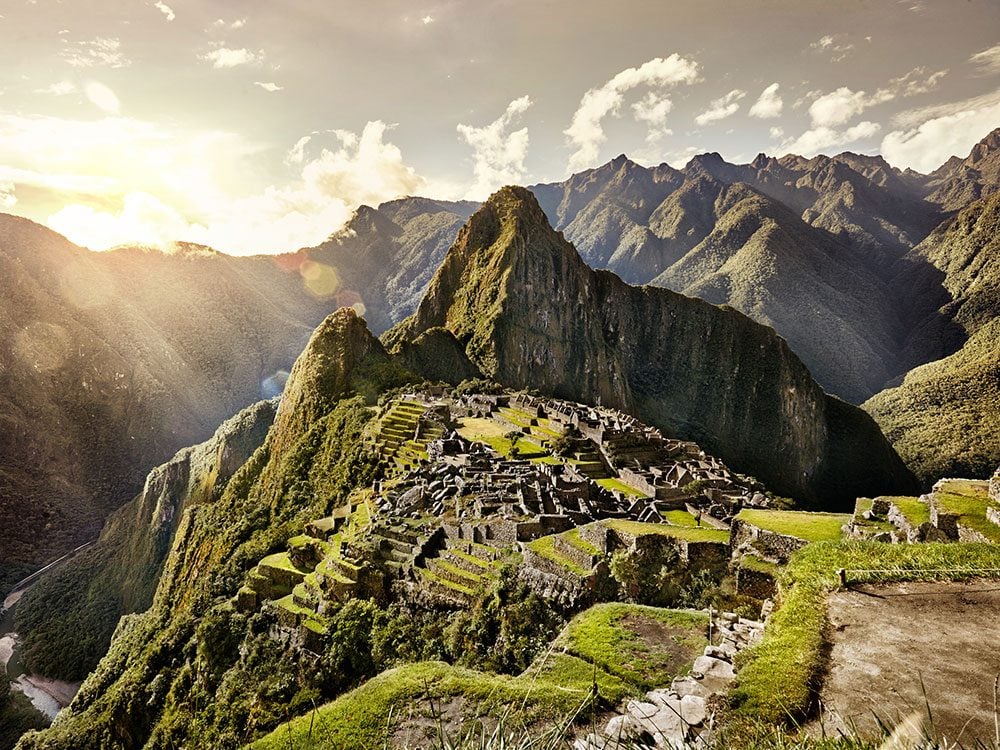
Machu Picchu Facts Most People Don’t Know
Machu Picchu is truly worthy of wonder. Perched on the top of a remote mountain peak high in the Peruvian Andes, the remarkably well-preserved citadel looks as though its original inhabitants could return at any moment. Yes, the thatched roofs on its temples and houses have long since disintegrated, but the 550-year-old stonework has stubbornly defied the passage of time. Among the likes of Chichen Itza, the Roman Colosseum and the Great Wall of China, this lost city of the Incas stands as a triumph of engineering, and marvel of human ingenuity. It’s also steeped in mystery—and is perhaps even more mysterious when you consider so much “common knowledge” about this modern wonder of the world is just plain fiction. These fascinating Machu Picchu facts set the record straight, and serve as required reading for your own explorations of this truly breathtaking bucket list destination.
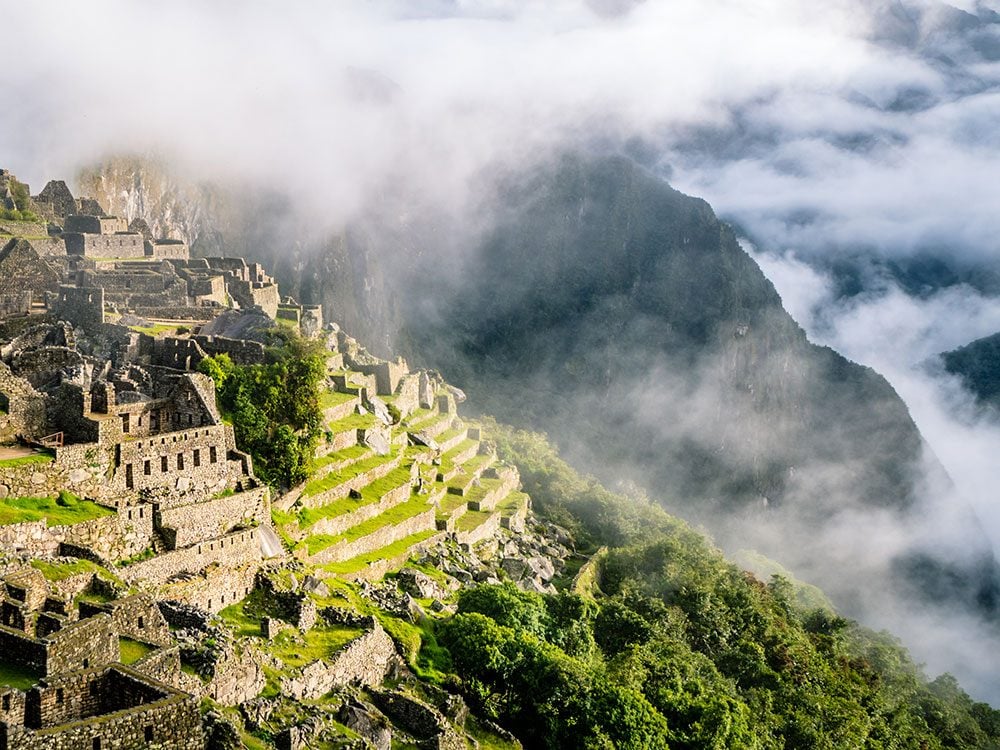
Machu Picchu is the name of the mountain, not the ruin
One of the most pervasive myths about Machu Picchu is that it refers to an Incan ruin. According to EF Go Ahead Tours Machu Picchu guide Paul Guerra, Machu Picchu is the name of the mountain itself, and literally translates from the native Quechua language as “Old Peak.” Over time, the archaeological site has become synonymous with the mountaintop on which it was found.
Test your knowledge with these history questions people always get wrong.
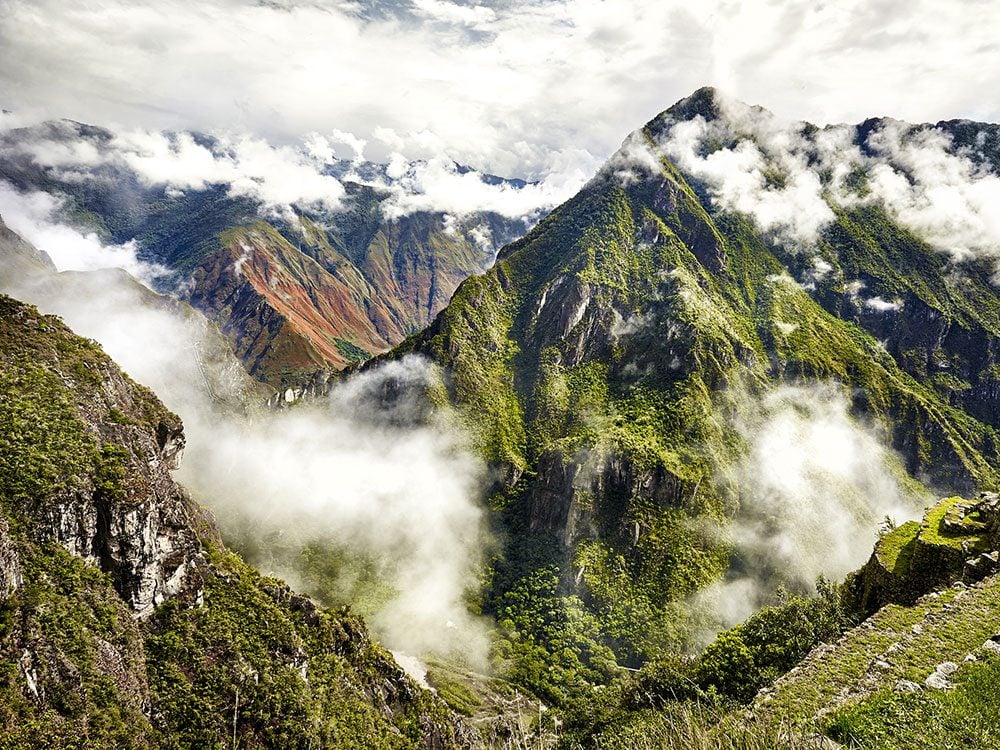
The natural landscape of Machu Picchu is as impressive as the ruin
Although the main attraction in Machu Picchu is the Incan citadel, the ruins are very nearly upstaged by the awe-inspiring beauty of their surroundings. When you reach Machu Picchu, the first thing you’ll see after emerging from the dense tropical canopy of the mountaintop isn’t the citadel, but the breathtaking Sacred Valley of the Inca—a dizzying drop of several hundred feet to the winding ribbon of the River Urubamba below. Swathed in luminous green foliage, the soaring peaks that stretch beyond the chasm and into the distant horizon are a wonder in and of themselves, seeming almost to “breathe” thanks to the wispy clouds that are constantly weaving through the landscape. Pausing for a few moments to admire this spectacular natural beauty before continuing on to the ruins themselves can be a truly rewarding—not to mention, humbling—experience.
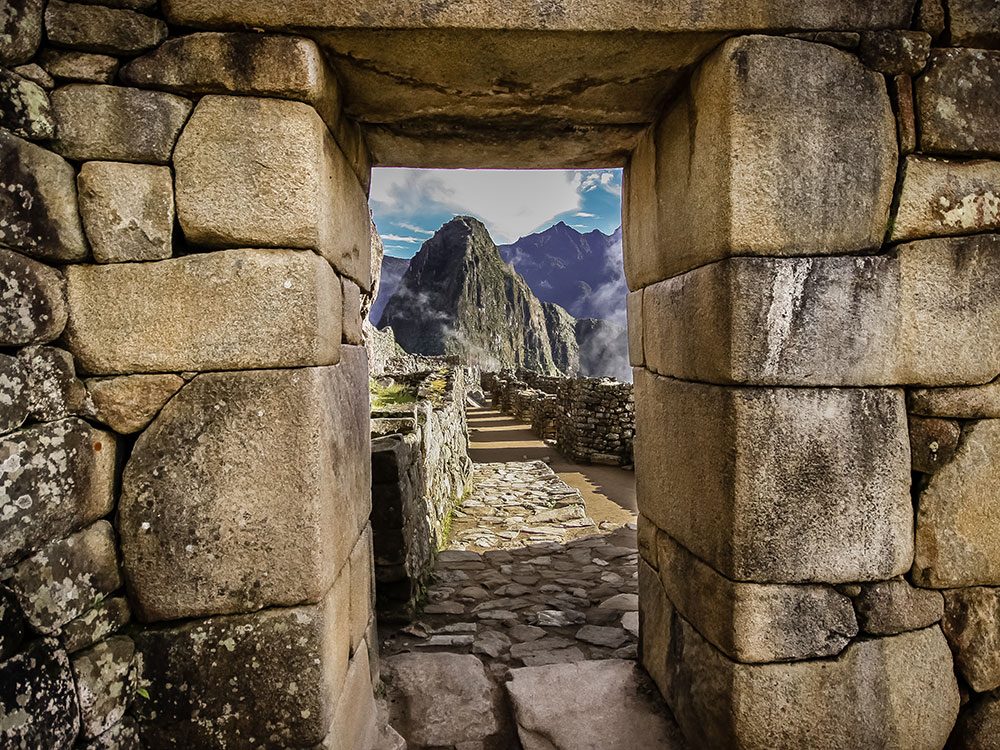
Historically speaking, Machu Picchu is nothing special
Considering it’s one of the seven wonders of the modern world, you might assume Machu Picchu played a major role in Incan history. Truth is, the Incas only lived in Machu Picchu for 90 years before the citadel was abandoned, and there’s no evidence to suggest anything remarkably noteworthy ever took place there. Machu Picchu’s only claim to fame is the fact that it remains so well preserved, with 70 per cent of the ruins in their original state. Ironically, says Guerra, it was Machu Picchu’s historical insignificance that ensured its unlikely survival. “The Spanish sacked only the most important cities, and Machu Picchu was relatively unimportant and remote,” he says. “It was the city of Cusco that served as the centre of the Inca world and the seat of all political power.”
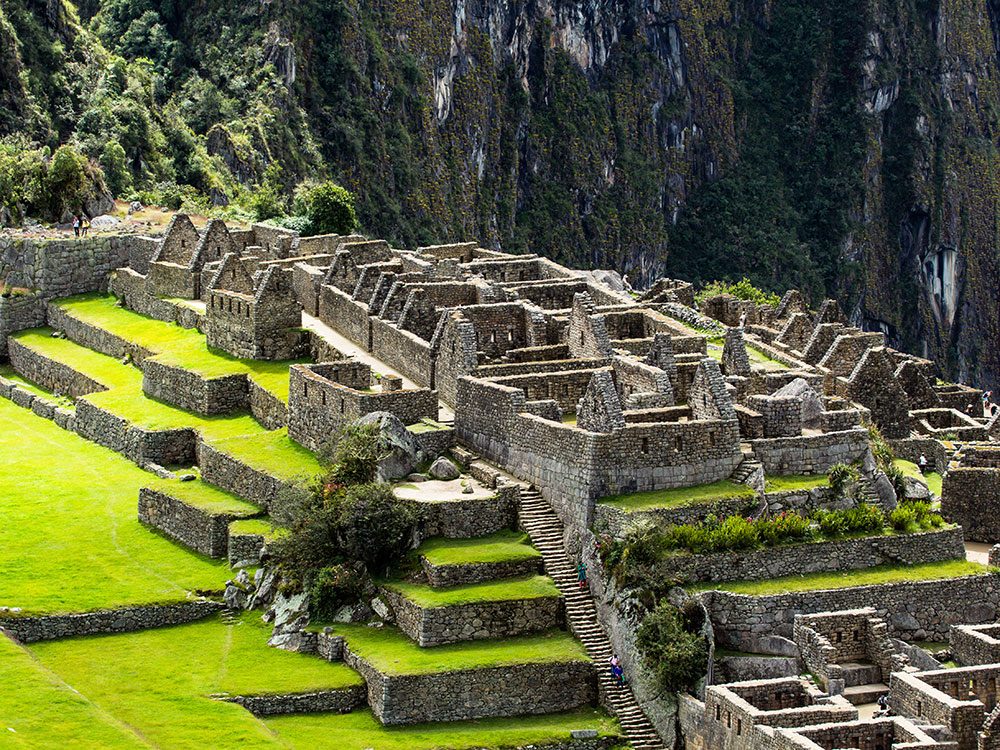
Machu Picchu was discovered by accident
The lost city of the Incas may have remained undiscovered if not for a happy accident. Although Hiram Bingham, an American archaeologist, is credited with discovering Machu Picchu in 1911, it wasn’t what he was looking for. Bingham had actually set out to find Vilcabamba, the last capital of the Inca empire before its collapse under Spanish rule. A promising lead on an abandoned Incan village brought Bingham to Machu Picchu, where, with the help of two Andean families who were already living on the mountain at the time, he eventually uncovered the citadel, remarkably well-preserved beneath several centuries of lush, tropical vegetation. The period from 1912 to 1915 was spent clearing the site which would ultimately become one of the world’s top tourist destinations.
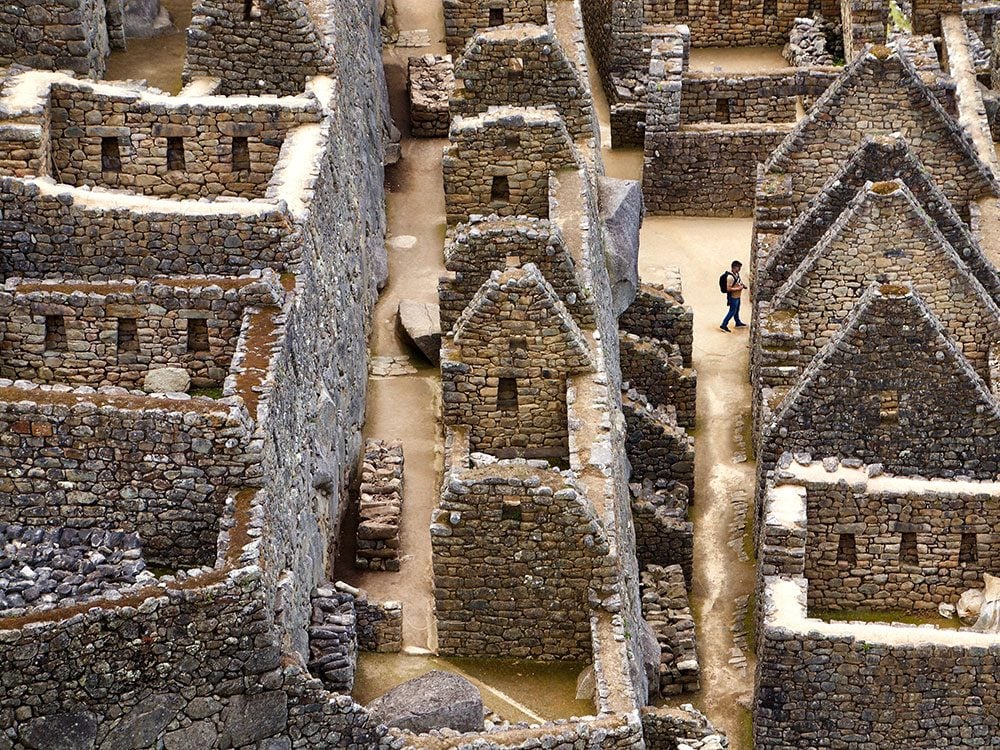
The citadel of Machu Picchu was never finished
When the citadel of Machu Picchu was abandoned around 1540 AD, it was still very much a work in progress. In fact, some of the ruins at the site are of buildings in mid-construction, offering archaeologists a unique glimpse of Incan building techniques. As they stand, the ruins include two temples, plazas and around 80 residences which housed the city’s approximately 700 inhabitants. According to guide Guerra, the residences were only used for sleeping and cooking, with the sole furniture consisting of beds. “Life in Machu Picchu was conducted outside the house,” Guerra says, which accounts for the relatively small footprints of the residential buildings.
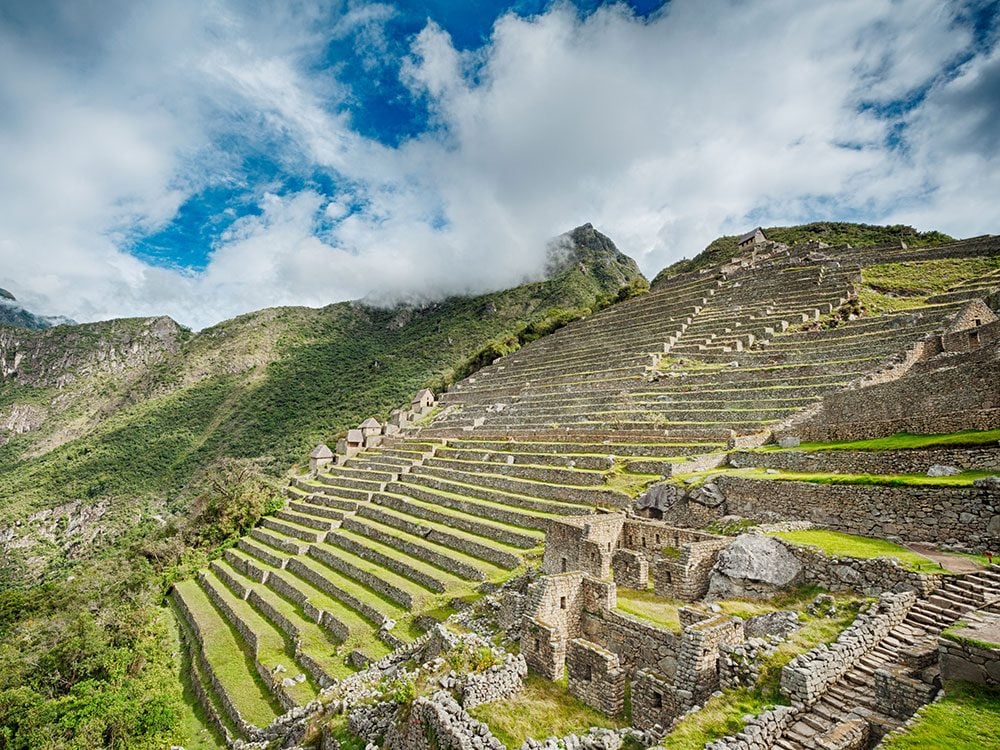
Machu Picchu is more than just a city
Although the structures of the citadel have given archaeologists unprecedented insight into the daily life of the Andean people of the 16th century, the open spaces of Machu Picchu hold their own invaluable clues. As local guide Guerra explains, beyond the “urban” sector of the city lies a vast agricultural component. The stepped terraces built into the mountainside served not only as retaining walls to prevent erosion, but also as farmland for vital crops including yucca, sweet potato and coca. “Coca leaves were one of the most important plants to the Andeans,” says Guerra. “It helped with the effects of altitude sickness, aided digestion, and relieved hunger and fatigue.”
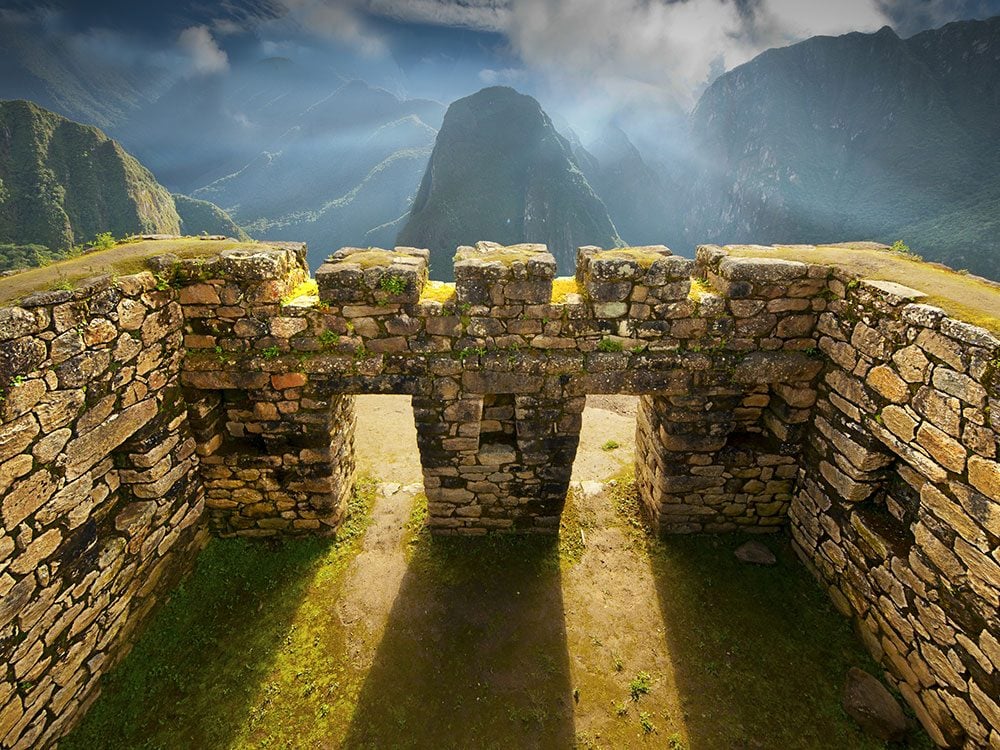
The real reason Machu Picchu was abandoned
According to Guerra, the citadel of Machu Picchu was abandoned not once, but twice. “Five years before the Spanish occupation, the Inca left the city to fight in a civil war,” he says. “Ultimately, in 1540, they fled for good to escape the Spanish, taking the river all the way down to the Amazon.” Guerra says that many of the people currently living on the Amazon can trace their origins to that 16th-century mass migration from the Peruvian Andes.
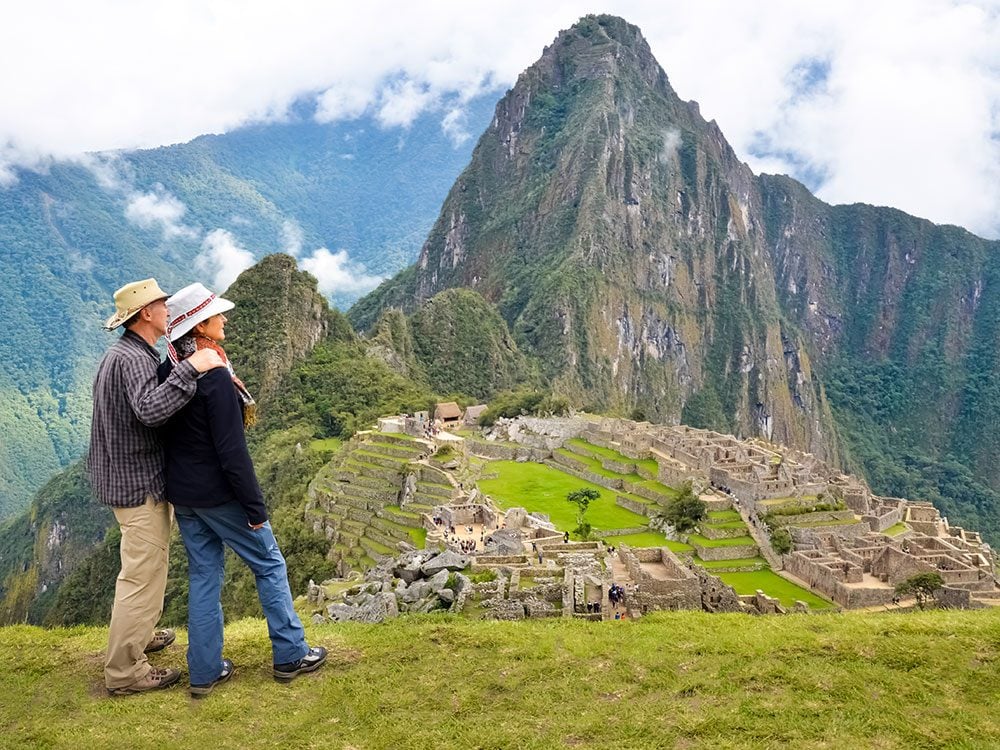
The mountain in all of those pictures isn’t Machu Picchu
What if we were to tell you that the iconic rounded peak in everyone’s Machu Picchu selfie isn’t actually Machu Picchu? The instantly-recognizable (and almost impossibly photogenic) backdrop to the citadel ruins is in fact not the eponymous mountain, but its sister peak, Huayna Picchu, which translates from the native Quechua language as “Young Peak.”
Here are more geography facts everyone gets wrong.
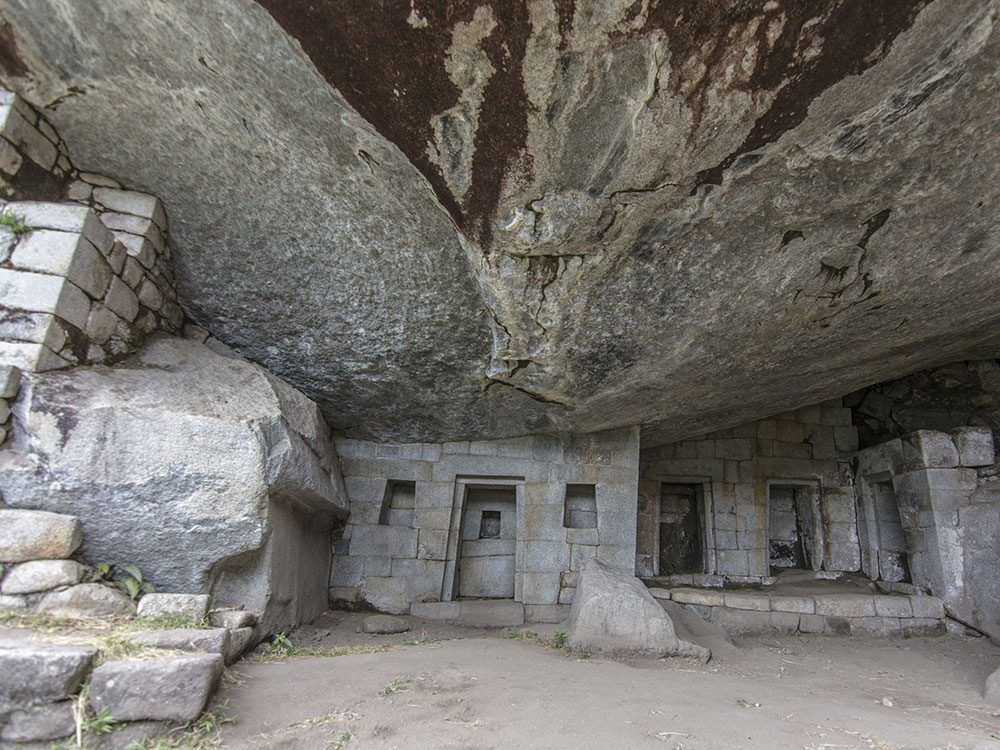
Climbing Huayna Picchu is a rare treat
Want to take your Machu Picchu experience to the next level—literally? Rising 260 metres higher than Machu Picchu itself is its sister peak, Huayna Picchu. If you’re game for the higher admission fee—not to mention the steep and occasionally slippery trail—you’re granted access to an exclusive club: only 400 visitors are allowed in each day. Your reward? A bird’s-eye view of the citadel from its rarely-photographed northern approach, and access to the mysterious Temple of the Moon (above), built in the mouth of a cave and only discovered as recently as 1936.
Make sure you avoid these common mistakes when booking your vacation online.
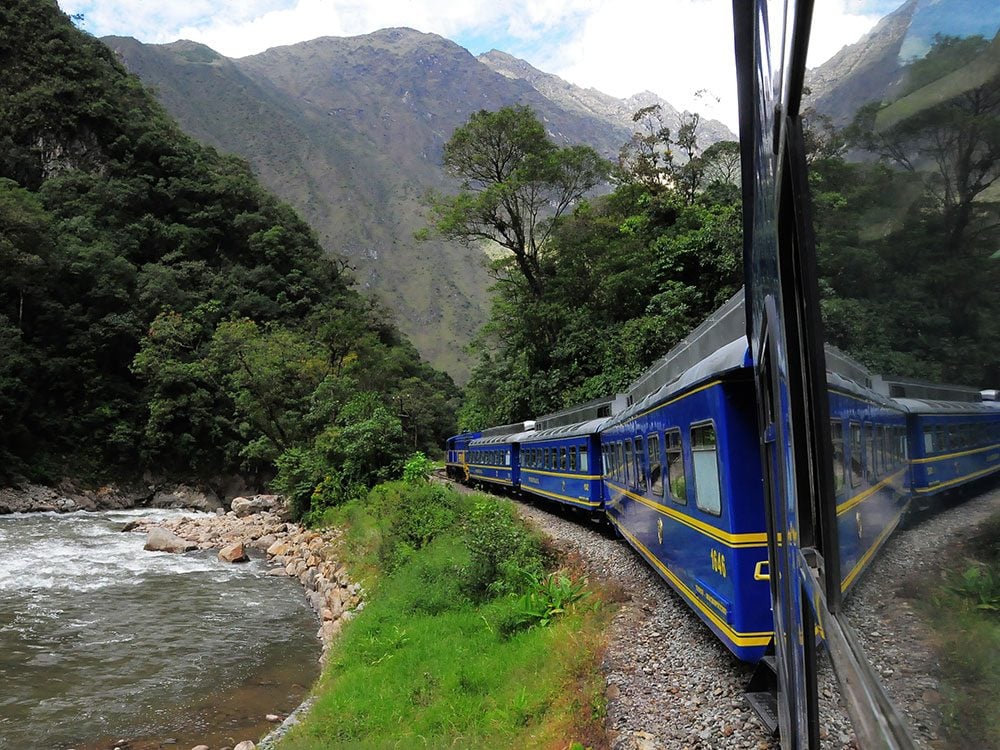
There are no roads to Machu Picchu
For Canadian travellers on EF Go Ahead Tours‘ spectacular “A Week in Peru” itinerary, getting to Machu Picchu is a process that literally involves planes, trains and automobiles. After flying into the Peruvian capital of Lima, you’ll catch a domestic flight to Cusco—a journey that takes just over an hour. From Cusco, you’ll board a bus to the town of Ollantaytambo, where you’ll meet a Peru Rail train with service terminating in Machu Picchu. Why the train for the last leg of the journey, and not a continuation of the bus service, you might ask? Simply, there aren’t any roads leading into Machu Picchu, and, according to guide Guerra, the authorities are going to keep it that way. “It’s the best way to regulate the site and prevent further degradation from human traffic,” Guerra says. Even the dizzying switchback that leads from the base of Machu Picchu to its summit was only built in 1945. Prior to that, the only way to access the citadel was a four-day hike along the Inca Trail—part of the 13,000-kilometre network of footpaths that the Incas used to traverse the mountaintops of Peru.
Discover the world’s most romantic destinations.
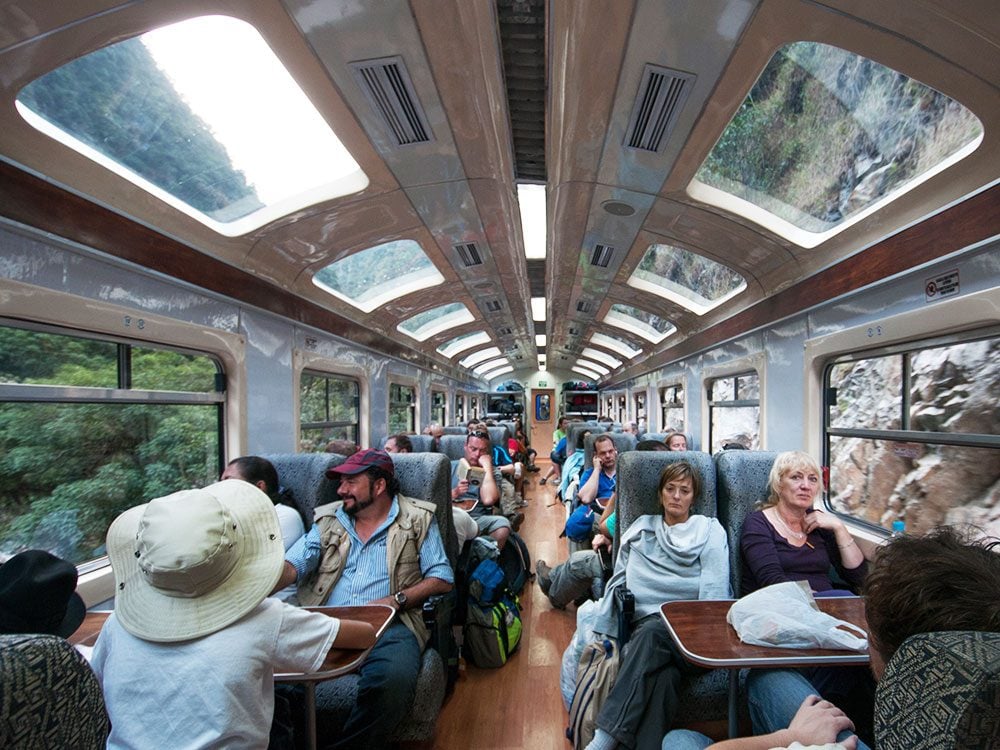
The train to Machu Picchu is an attraction in itself
As the last leg on your long trek to Machu Picchu, you might expect the Inca Rail train ride from Ollantaytambo to drag on interminably. Far from it. In fact, everything on-board is designed to make the 90-minute journey pass in the blink of an eye. Seated in one of the comfortable bubble-top carriages, you’ll enjoy unobstructed views of the Andes looming overhead, while you speed through fields of golden corn and ruby-red quinoa. A complimentary snack (a welcome opportunity to savour a steaming mug of coca tea!), charming service and even live entertainment in the form of an alpaca wool fashion show make the train ride part of the adventure.
In love with the romance of train travel? Check out this once-in-a-lifetime train trip through the Canadian Rockies.
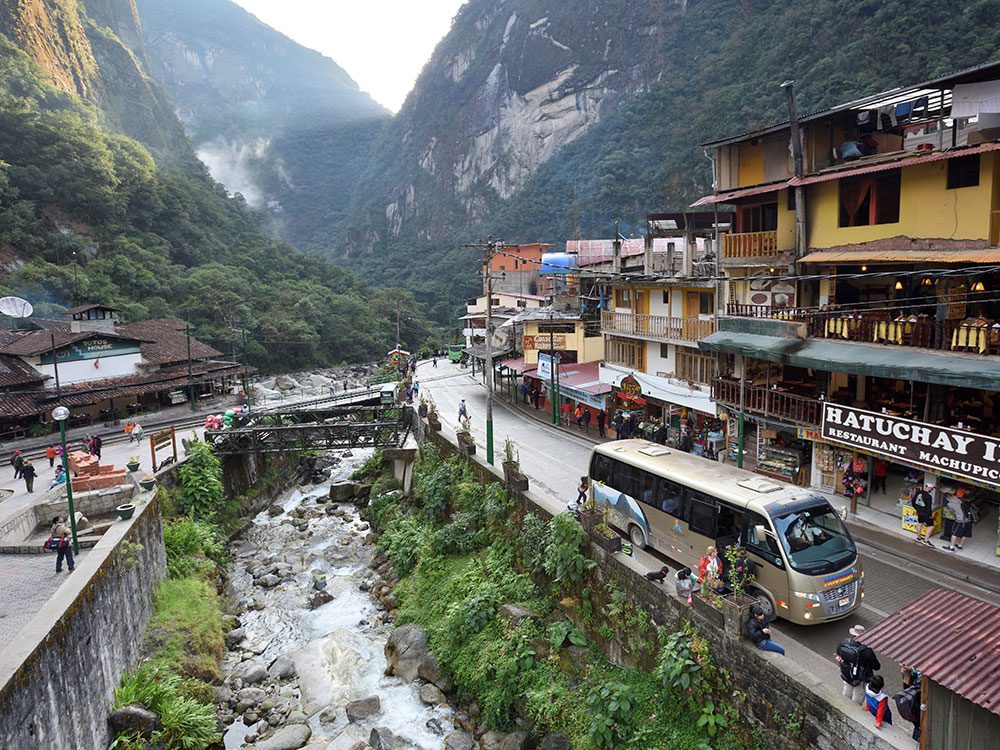
There’s a town in Machu Picchu—and it’s utterly charming
Some call it Aguas Calientes. Others call it Machu Picchu Pueblo, or even simply (and somewhat confusingly) Machu Picchu. However you choose to refer to it, the town that serves as both the terminus for the Peru Rail train and as base camp for visitors to Machu Picchu is absolutely charming. Clustered along both sides of the winding railway track, and nestled between the raging Urubamba River and the mountain itself, the town boasts a bustling handicrafts market, countless restaurants, and accommodations ranging from humble hostels to luxury hotels. It’s small enough to feel incredibly safe (there are only 4,500 inhabitants year-round), and has a similar look and feel to the remote mountain towns of the Swiss Alps. For a truly unforgettable stay, book a riverside room at Casa del Sol, an unabashedly elegant boutique hotel where you can fall asleep to the roar of the river—nature’s ultimate white noise machine.
Here are 10 places you need to visit before they disappear.
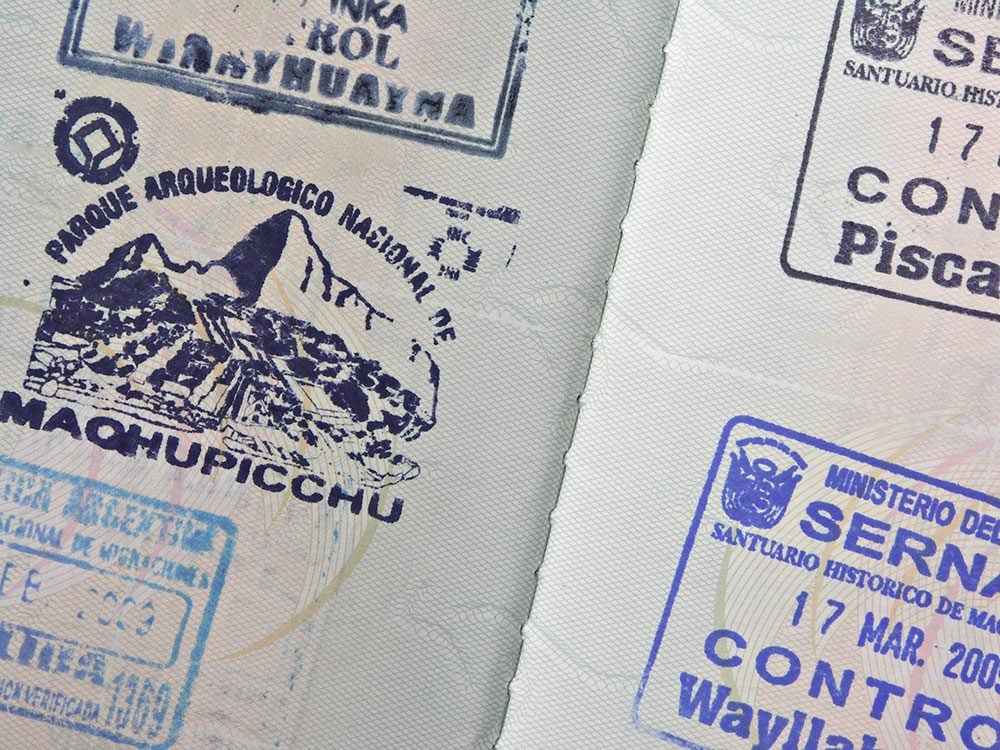
You must bring your passport to Machu Picchu
In order to enter Machu Picchu, you’ll not only need your admission ticket, but your passport as well. What many visitors don’t realize, however, is that your passport also comes in handy when you leave. Just before you exit the site to line up in the bus loading zone, look for a self-serve booth where you can stamp your passport with a custom Machu Picchu design. Although the stamp doesn’t carry any official significance, it’s a badge of honour for your passport, and a charming souvenir of your Machu Picchu experience.
Looking for more bucket list-worthy travel destinations? Check out the world’s most breathtaking forgotten cities.
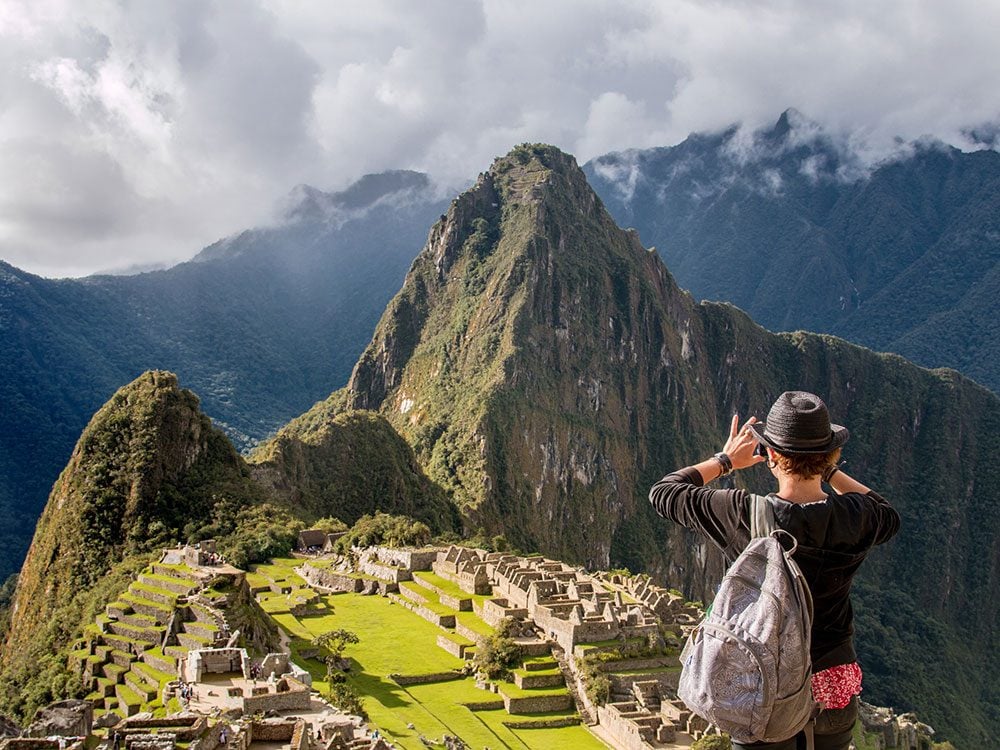
Machu Picchu isn’t as high as you thought it was
Ask anyone who’s ever been to Machu Picchu for advice, and their first tip will inevitably be, “Beware of altitude sickness.” Caused by a rapid ascent to an elevation of 8,000 feet or higher, altitude sickness can result in nausea, headache, fatigue and shortness of breath—a collection of symptoms that Departures host and seasoned traveller Justin Lukach once described as feeling like “the worst hangover of my life.” Although it’s is a legitimate concern for Canadian travellers en route to Machu Picchu, Machu Picchu itself—situated at just under 8,000 feet—isn’t where altitude sickness peaks (if you’ll pardon the pun). Rather, it’s the intermediary leg of the journey—the city of Cusco in the Peruvian Andes—that poses the biggest risk. Located at 11,000 feet above sea level, Cusco is the highest altitude you’ll reach on EF Go Ahead Tours‘ “A Week in Peru” itinerary, and where altitude sickness can strike with full force. The good news? There are plenty of natural remedies for altitude sickness (including tasty coca leaf tea, which is on offer in virtually every hotel lobby)—and it’s all downhill from there!
Find out why Peru is one of the top destinations recommended by the author of 1,000 Places to See Before You Die.
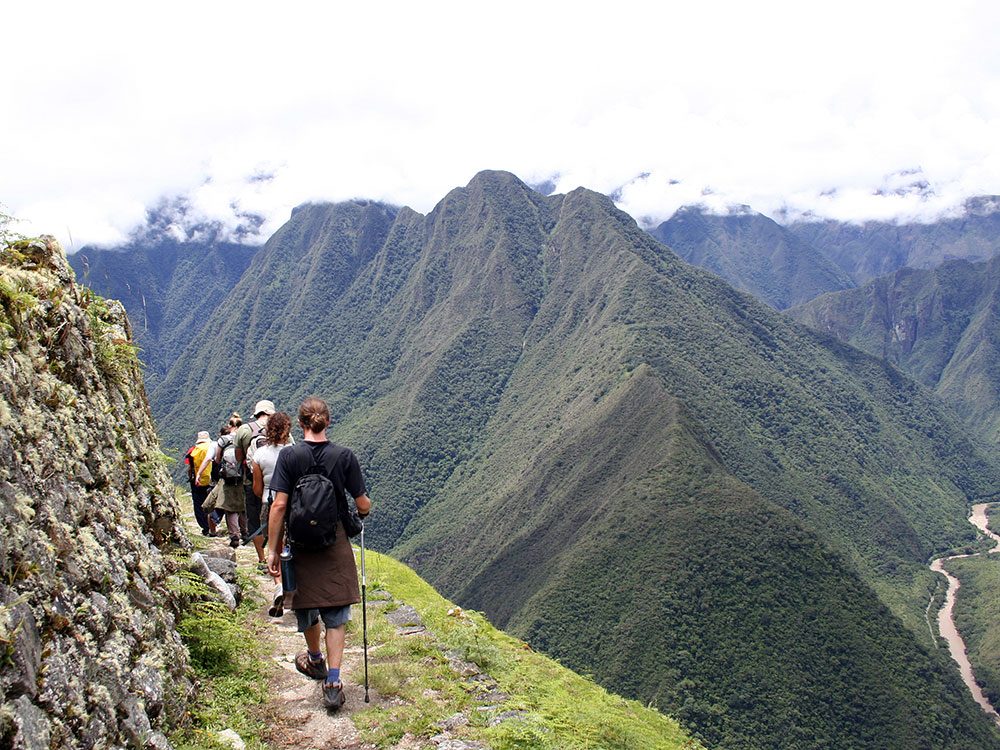
You don’t have to be an experienced hiker to navigate the ruins
Worried about over-exerting yourself in Machu Picchu? Take comfort in the fact that there’s very little walking involved after you’ve taken the bus from the base of the mountain to its peak. That said, it’s a good idea to pace yourself along the trails, regardless of your fitness level. Even if Machu Picchu isn’t high enough to trigger a case of altitude sickness, the relative thinness of the air will likely leave you short of breath after climbing stairs, and walking the bulk of the ruin’s most noteworthy trails will involve around 10,000 steps.
Now that you’ve got these Machu Picchu facts under your belt, discover 20 great things to do in Peru (besides Machu Picchu).